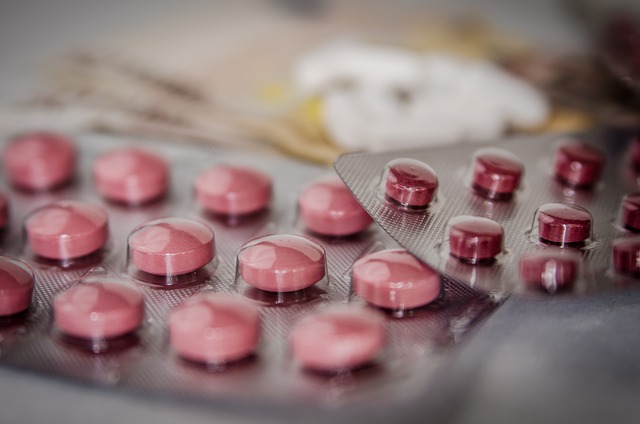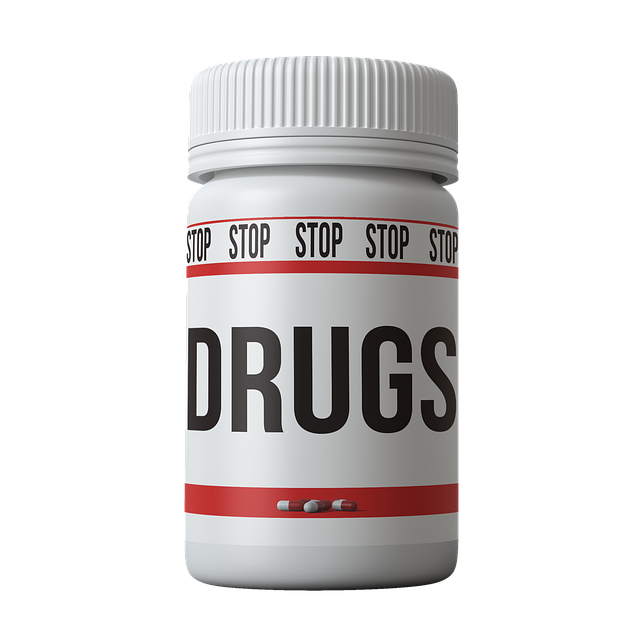GLP-1 drugs (glucagon-like peptide-1 receptor agonists) are a powerful and growing class of medications for type 2 diabetes management. They replicate natural hormones, stimulating insulin release and suppressing glucagon to control blood sugar levels while offering additional benefits like weight loss, reduced cardiovascular risk, and improved beta cell function. This has led to increasing utilization and market presence globally. Key advantages include cost-effectiveness compared to other treatments, with potential long-term savings for healthcare systems. Future developments focus on enhancing effectiveness, safety, and accessibility through innovations like sustained-release formulas and personalized medicine approaches, aiming to revolutionize diabetes management.
“GLP-1 receptor agonists, a groundbreaking class of diabetes medications, have garnered significant attention for their dual role in blood sugar control and cost savings. This article explores the rising trend of GLP-1 drugs in the market and their potential to revolutionize diabetes care. We delve into their mechanism, efficacy, and safety, while also examining how these agonists lower healthcare costs. Through real-world case studies and future innovations, we uncover the profound impact of GLP-1 drugs on patient outcomes and healthcare economics.”
Understanding GLP-1 Receptor Agonists: Their Role in Diabetes Management

GLP-1 receptor agonists, or GLP-1 drugs, are a class of medications that have gained significant attention in diabetes management. They mimic the effects of the natural hormone glucagon-like peptide-1 (GLP-1), which is secreted in response to food intake. By activating specific receptors in the body, these drugs stimulate insulin secretion when blood sugar levels are high, while also suppressing the release of glucagon, a hormone that raises blood sugar. This dual action helps lower blood glucose levels and maintain overall metabolic balance.
The role of GLP-1 drugs extends beyond just glycemic control. They have been shown to offer additional benefits such as weight reduction, reduced cardiovascular risk, and improved beta cell function over time. These multiple advantages make GLP-1 receptor agonists a promising treatment option for type 2 diabetes patients, offering both short-term blood sugar management and long-term health benefits.
The Rising Trend of GLP-1 Drugs: A Market Analysis

In recent years, there has been a notable rise in the utilization and market presence of GLP-1 drugs. This trend is driven by their proven efficacy in managing diabetes and improving cardiovascular health. As research continues to unearth the numerous benefits of these agonists, both for type 2 diabetes patients and those at risk, demand for GLP-1 drugs has surged. The global market analysis reveals a steady growth trajectory, with pharmaceutical companies investing heavily in developing more advanced and accessible formulations. This surge in popularity is not just a fleeting fad; it reflects the medical community’s growing recognition of GLP-1 drugs as a game-changer in diabetes management.
The increasing adoption rates can be attributed to their cost-effectiveness, especially when compared to other long-term treatment options. GLP-1 drugs offer a more affordable and convenient solution for patients, potentially reducing healthcare costs in the long run. Market dynamics indicate that this trend is here to stay, with forecasts predicting continued growth and innovation in the GLP-1 drug space.
How GLP-1 Receptor Agonists Lower Healthcare Costs

GLP-1 receptor agonists, a class of medications that mimic the effects of the natural hormone glucagon-like peptide-1 (GLP-1), offer more than just benefits in blood sugar control for people with type 2 diabetes. One of their significant advantages lies in their potential to reduce healthcare costs associated with chronic diseases. By improving glycemic control, these drugs can decrease the risk of severe hyperglycemic events, which often lead to costly emergency room visits and hospitalizations.
Additionally, GLP-1 drugs have been shown to promote weight loss, leading to better overall health outcomes. This effect can translate into lower healthcare expenses as obesity-related comorbidities, such as cardiovascular diseases and type 2 diabetes complications, may be prevented or managed more effectively. Furthermore, the long-acting nature of some GLP-1 agonists means they require less frequent dosing compared to other medications, potentially reducing healthcare provider costs and patient burden.
Efficacy and Safety Profile: Unlocking the Benefits

GLP-1 receptor agonists, a class of drugs designed to mimic the effects of the natural hormone glucagon-like peptide-1, have shown remarkable efficacy in managing type 2 diabetes. These GLP-1 drugs not only lower blood sugar levels but also offer additional benefits such as weight loss and improved cardiovascular health. The mechanism behind their success lies in stimulating insulin production and suppressing glucagon release, leading to better glycemic control.
Safety is another critical aspect that contributes to the cost-effectiveness of GLP-1 drugs. With a generally favorable safety profile, these medications have minimal side effects compared to other diabetes treatments. Common mild symptoms include nausea, vomiting, and diarrhea, which often resolve over time. More severe but rare complications include pancreatitis and kidney problems. Nonetheless, ongoing research continues to explore and enhance the understanding of GLP-1 drugs’ long-term safety, ensuring their continued viability as a valuable therapeutic option for diabetes management.
Patient Adherence and Compliance with GLP-1 Therapy

Patient adherence and compliance with GLP-1 receptor agonist therapy are crucial considerations for determining the cost-effectiveness of these drugs. Ensuring patients take their medications as prescribed is essential for managing diabetes and preventing complications, but it can also impact healthcare costs. Studies have shown that improving patient adherence to GLP-1 drug regimens can lead to better glycemic control, reduced rates of hypoglycemia, and lower overall treatment costs.
Various strategies can enhance patient compliance, such as providing clear education about the importance of GLP-1 therapy, simplifying medication administration, offering patient support programs, and using technology to track and remind patients to take their medications. By focusing on these aspects, healthcare providers can optimize the use of GLP-1 drugs, leading to better outcomes and more efficient resource utilization.
Case Studies: Real-World Success Stories of GLP-1 Drugs

In the realm of diabetes management, case studies showcasing real-world success stories with GLP-1 drugs are abundant and compelling. These stories highlight the cost-effectiveness and clinical benefits associated with this class of medications. For instance, several studies have reported significant improvements in glycemic control among patients with type 2 diabetes who switched to GLP-1 therapies. Not only did these drugs achieve remarkable HbA1c reductions, but they also demonstrated a positive impact on weight management—a common challenge for diabetics.
Moreover, real-world applications of GLP-1 drugs have shown promising results in terms of patient adherence and quality of life. Patient testimonials and clinical trials alike emphasize the convenience and once-daily dosing regimens of these medications, which enhance treatment adherence compared to more frequent injections. Furthermore, cost-analyses suggest that despite their initial expense, GLP-1 drugs can lead to substantial long-term savings for healthcare systems due to reduced hospitalization rates and improved overall glycemic control.
Future Prospects and Innovations in GLP-1 Receptor Agonist Development

The future prospects and innovations in GLP-1 receptor agonist development are promising, with researchers continually striving to improve their efficacy, safety, and cost-effectiveness. Ongoing advancements include the exploration of new delivery methods, such as sustained-release formulations and even oral administration, which could enhance patient convenience and compliance. Additionally, there is a growing focus on personalized medicine approaches, where treatments can be tailored based on individual patient characteristics, potentially optimizing GLP-1 drugs’ impact.
Furthermore, combinatorial therapies involving GLP-1 receptor agonists with other metabolic agents are being investigated to address multiple aspects of metabolic disorders simultaneously. These innovative strategies aim to provide more comprehensive solutions for conditions like type 2 diabetes and obesity, while also reducing the overall cost of care by potentially combining medications into fewer, more effective regimens.
Conclusion: Cost-Effectiveness and Its Impact on Diabetes Care

The cost-effectiveness of GLP-1 receptor agonists is a significant consideration in diabetes care, as it directly influences accessibility and patient outcomes. These drugs, known for their remarkable efficacy in glycemic control, have faced challenges in terms of affordability. However, recent studies indicate that while initial costs may be high, long-term savings are achievable through reduced complications and hospitalizations. This shift towards value-based healthcare models further emphasizes the potential for GLP-1 drugs to become a cost-sustainable option for many patients.
As diabetes management continues to evolve, integrating these innovative therapies into standard care requires careful analysis of economic data. By demonstrating their ability to enhance patient quality of life and reduce healthcare system burdens, GLP-1 drugs can pave the way for better diabetes management globally. This is particularly crucial in regions with diverse healthcare resources, ensuring that cost-effectiveness doesn’t compromise access to essential treatments.
